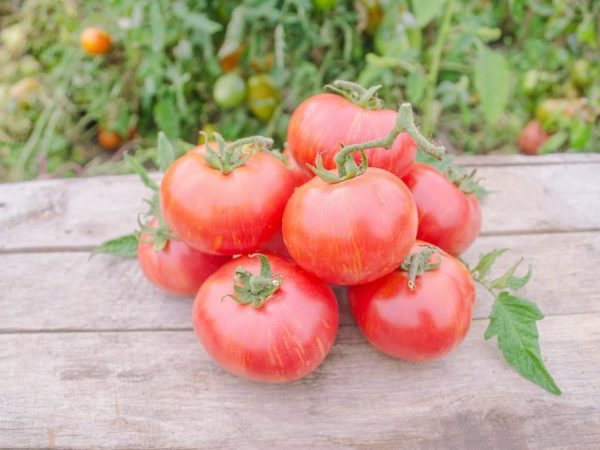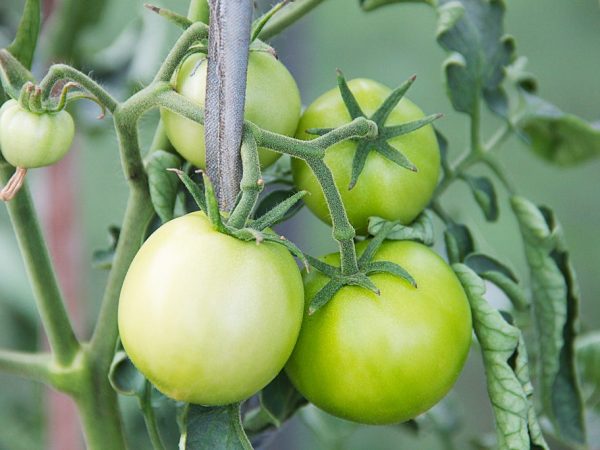Characteristics of the variety of tomatoes Tais
Tais tomato is easy to care for, excellent taste, long shelf life. It is for this that Tais tomatoes fell in love with Russian gardeners.

Characteristics of the variety of tomatoes Tais
Characteristics of the variety
The plant is determinate, its height does not exceed 1 m. Tais tomatoes can be grown in open ground, suitable for cultivation in film greenhouses.
The variety is early maturing. From the first shoots to active fruiting, it takes from 110 to 120 days.
According to the description, the Tais variety:
- resistant to changes in temperature or climatic conditions;
- suitable for transportation (in the process, the fruits do not deteriorate, but retain their presentation);
- does not lend itself to pests;
- tolerates waterlogging or dryness of the soil, etc.
Landing takes place at the end of May. The best way is seedling. Seedlings are planted in the 20th of March.
The yield of the variety is high. From 1 sq. m harvested about 7-8 kg of tomatoes. The distance between 2 bushes is 30-35 cm. This is necessary for the normal development of the plant. Accordingly, 1 sq. m should not be placed more than 4 bushes.
The plant is self-pollinating, but if necessary, you can pollinate with other varieties of tomatoes.
Description of the bush
The bush is not tall, but strongly leafy. Leaves are bright green, medium in size. They have a small bend, the edges are practically not wavy. The stem and root system are powerful, but when transplanting seedlings to a permanent place, it is better to use a trellis.
In one cluster, about 7-8 fruits are formed with a total weight of up to 1 kg. The inflorescence is simple.
Description of fruits
Tomatoes have a deep red hue. The maximum weight is 120 g, but most often it does not exceed 100 g. The peel is thin, but allows the fruit to be preserved for a long time. Thanks to this, Tais tomatoes can be used for conservation.
Description of fruits:
- rounded shape;
- weak ribbing;
- small chamber;
- smooth surface;
- homogeneous and dense pulp;
- a small amount of seeds.
In addition to preservation, the fruits of Tais tomatoes are recommended to be consumed fresh. They can be added to cold, light salads, used in vegetable cuts.
Tomatoes are suitable for stewing (especially for stews) or for preparing vegetable kebabs. It is not recommended to use fruits for tomato paste, but for homemade sauces it is quite a good option.
Care

It is important to avoid waterlogging of the soil.
The care is traditional. Initially, the soil is prepared: weeding is carried out, fertilizers are applied (but only in moistened soil). If other plants have been grown in the ground up to this point, it is carefully processed.
The treatment includes a number of procedures:
- Watering. Carried out as needed. To do this, check the condition of the soil: it is better not to allow waterlogging. The average frequency of watering is once a week. If tomatoes are grown outdoors, watering is completely stopped during the rainy season. During severe drought, their number is increased up to 2-3 times a week. Only warm, settled water is used for irrigation.
- Loosening the soil. The purpose of the procedure is to enrich the soil with oxygen and stimulate the growth of the bush.It is carried out after a thick crust appears on the surface of the earth. This most often occurs after heavy rains.
- Tying. Although the bushes are not tall, they are best tied to a wooden or iron support. This will allow the seedlings to take root well. The stakes are driven in at a distance of 10-15 cm from the stem to a depth of about 35 cm.
- Top dressing. Usually, feeding is carried out three times per season, but sometimes it is necessary to do them every 2 weeks. As a fertilizer, the soil is fed with a complex mixture of organic and mineral substances. The main thing is that the nitrogen concentration is low. The most commonly used are ammonium nitrate, mullein, superphosphate, bird droppings, potassium chloride. When the tomatoes bloom, be sure to apply root dressing from boric solution.
It is important to remove weeds in time: they negatively affect the growth of the plant and stop it. It is also important to harvest on time. During the ripening period, you need to inspect the bushes daily and immediately pick ripe vegetables.
Diseases and pests
Tais tomatoes are resistant to external influences, but diseases can appear due to improper care. The most common disease of the variety is late blight. Its main manifestation is the darkening of some areas on the fruits. If the disease is not eliminated, all fruits will rot. If late blight has already struck the plant, you can use Acrobat or Healer.
Too high values of temperature and humidity in the greenhouse lead to the appearance of Alternaria. These are single spots of black color over the entire surface of the fruit. Ridomil Gold will help eliminate the disease.
If the soil has been waterlogged several times, gray rot may appear. Outwardly, it looks like a kind of fluff and bloom of gray. Byleton helps to get rid of her.
Conclusion
Tais tomatoes are juicy and large tomatoes suitable for any kind of dish. Caring for the plant is simple and consists of watering, feeding, loosening the soil, tying up the bushes. The plant can be affected by late blight, alternaria, gray rot.


